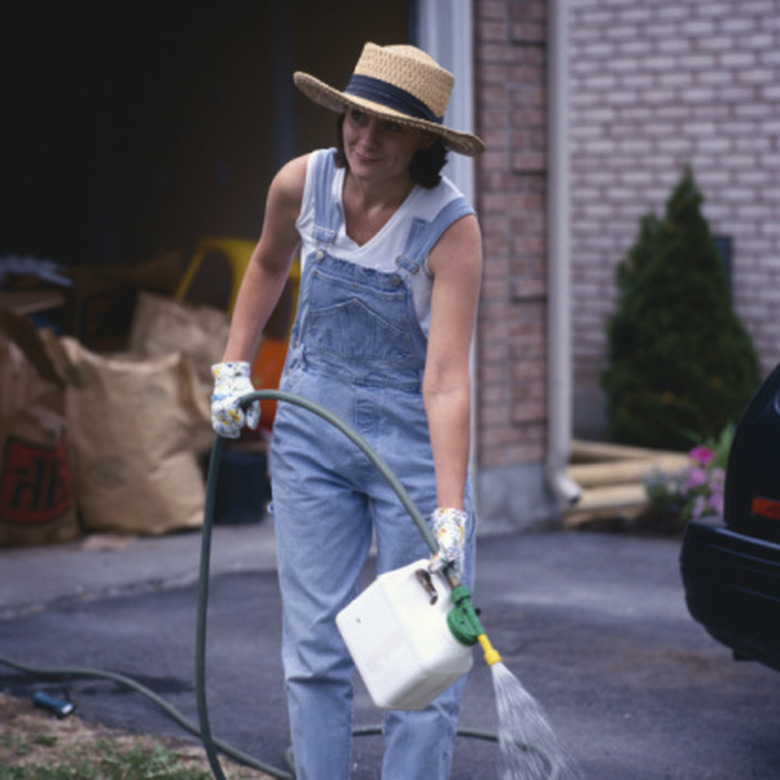Iron In Fertilizers
Although not one of the main three components — nitrogen, phosphorous and potassium — of most fertilizers, iron is one of the trace nutrients necessary for healthy plants. Iron in fertilizer comes in two main forms: iron sulfate and chelated iron. The difference between the two forms is important since it makes a difference in the plant's ability to absorb the iron.
Iron Sulfate
Iron sulfate is less expensive and more common in most general lawn and garden fertilizers. It is also available as a stand-alone product for application to gardens and lawns. Iron sulfate provides the iron necessary for healthy plant growth and helps treat iron deficiencies, or chlorosis, the symptoms of which are light-colored and yellow leaves. A major drawback of iron sulfate is that it can stain brickwork, walkways and concrete driveways. If it falls on such surfaces, it must be swept away immediately or it will leave a rust stain.
- Although not one of the main three components — nitrogen, phosphorous and potassium — of most fertilizers, iron is one of the trace nutrients necessary for healthy plants.
- Iron sulfate provides the iron necessary for healthy plant growth and helps treat iron deficiencies, or chlorosis, the symptoms of which are light-colored and yellow leaves.
Chelated Iron
Chelated iron has been broken down and bound to another compound. This allows it to be more readily absorbed by some plants. Unfortunately, it is much more expensive than iron sulfate. Chelated iron can sometimes be found in a fertilizer with other nutrients, or it can be purchased as a stand-alone fertilizer. In cases of iron deficiency, or chlorosis, chelated iron can offer quick relief since it offers better absorption, particularly in soils that are high in alkaline.
Alkaline Soils
Soil alkalinity affects a plant's ability to absorb iron. Iron sulfate binds with components of the soil and makes it impossible for the plant to take in the iron. This is a major cause of iron deficiency in alkaline soils. Chelated iron, on the other hand, does not bond to components in alkaline soil and remains available to the plant for absorption. For gardeners who have soil high in alkaline, it's important to use chelated iron so that plants can take it up.
- Chelated iron has been broken down and bound to another compound.
- Iron sulfate binds with components of the soil and makes it impossible for the plant to take in the iron.
Light
Fertilizers containing iron should be stored away from sunlight. The light breaks chelated iron down quickly, making the fertilizer useless for providing iron to the plants. In just a little more than a week, exposure to sunlight can break down 85 percent of the chelated iron. Storing the fertilizer in a dark location, protected from light, will prevent it from degrading.
